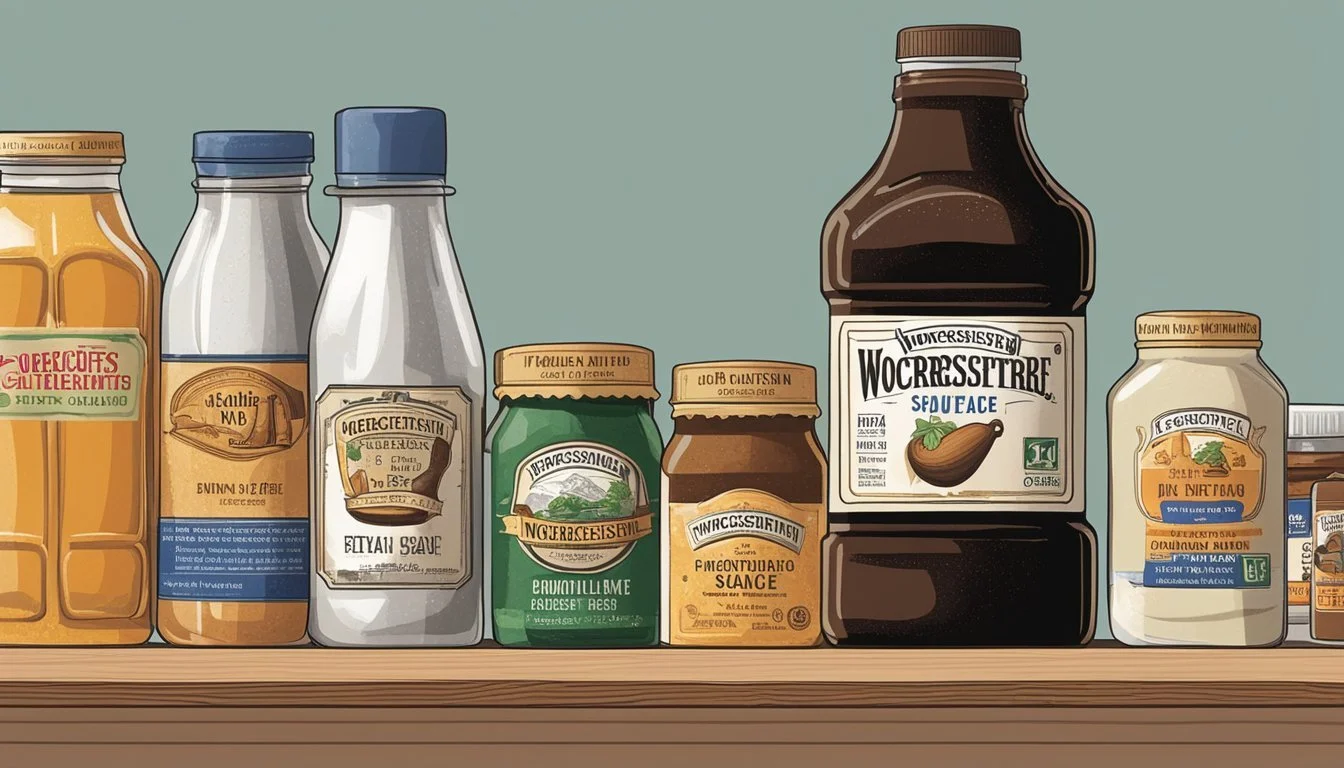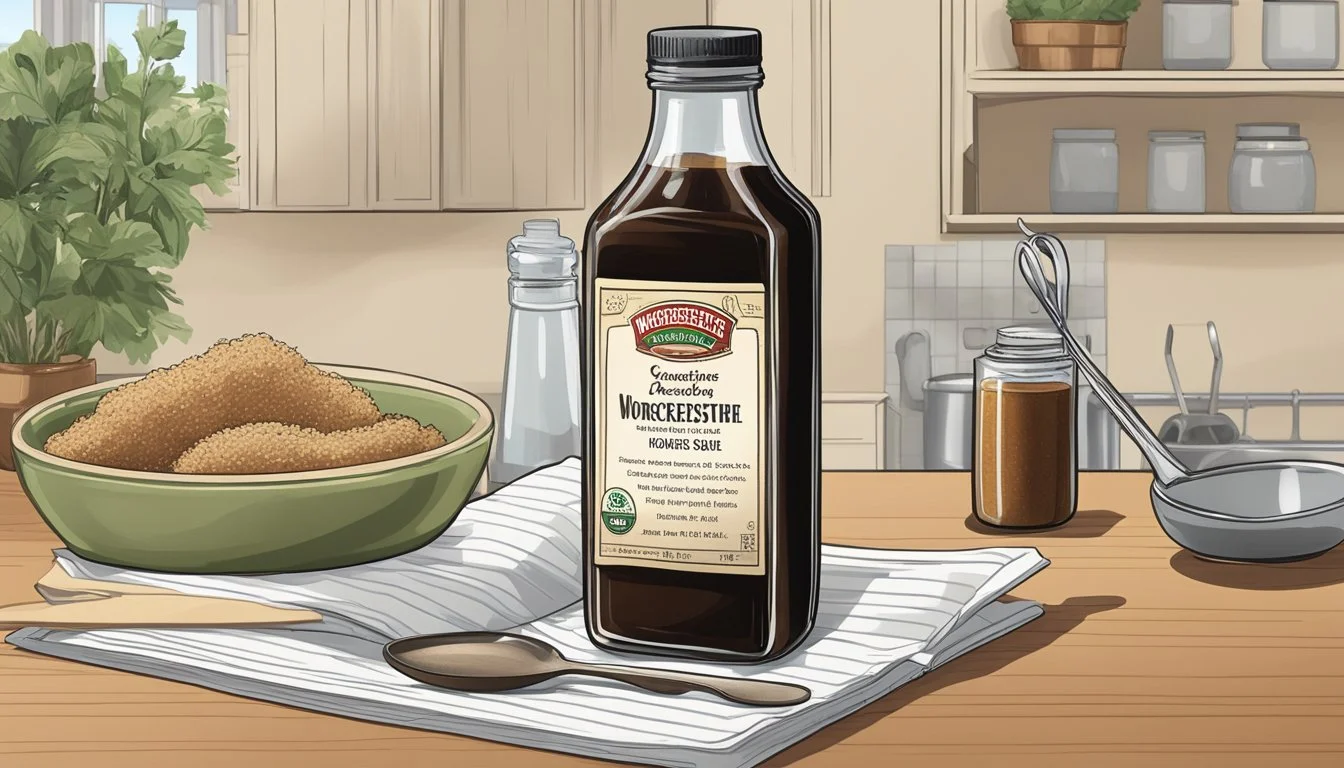How Long Does Worcestershire Sauce Last
Shelf Life and Storage Tips
Worcestershire sauce (how long does worcestershire sauce last?), a condiment with a complex flavor profile, is a staple in many kitchens and recipes. It's known for its ability to enhance flavor over a broad spectrum of dishes, from marinades to bloody marys. The sauce's longevity, both on the shelf and in the fridge, often leads to questions about its shelf life and how to tell if it has gone bad.
Typically, an unopened bottle of Worcestershire sauce can last well beyond its printed expiration date when stored in a cool, dark place like a pantry. Once opened, the sauce's shelf life varies depending on storage conditions. Refrigeration can extend its quality, keeping it at its best for up to three years.
Factors such as storage method, exposure to heat, and whether the bottle remains tightly sealed influence the quality and safety of the sauce over time. Properly stored Worcestershire sauce tends to remain safe for consumption for an extended period, with its quality peak lasting for about a year in the pantry and up to three years in the refrigerator after opening.
Understanding Worcestershire Sauce
Worcestershire sauce is a complex condiment known for its strong umami flavor, derived from a blend of ingredients and an intricate fermentation process. The seasoning is designed to add depth to a wide variety of dishes.
Ingredients
The foundation of Worcestershire sauce consists of vinegar, typically distilled from barley or corn, coupled with molasses for sweetness and color. High-quality sauces often include blackstrap molasses, which is darker and has a more intense flavor. Furthermore, Worcestershire sauce contains anchovies, (What wine goes well with anchovies?) which are essential for the umami element. Additionally, a variety of spices, garlic, and onions are used to create its unique flavor profile. Natural preservatives, such as vinegar itself, help maintain the sauce's shelf life.
The combination of these ingredients results in a rich and versatile condiment suitable for seasoning, marinades, and as a flavor enhancer in many recipes.
Fermentation Process
The process of making Worcestershire sauce involves allowing the mixture of ingredients to ferment. This step is crucial for developing the sauce’s distinctive taste and complexity. During fermentation, the flavors of the anchovies, spices, garlic, and onions meld together as they interact with the acidity of the vinegar. This phase can last for several months, or even years, depending on the specific recipe and desired intensity of flavor.
The careful balance and interaction of ingredients during fermentation ensure Worcestershire sauce's unique and lasting character, which can enhance a wide array of culinary dishes.
Shelf Life and Expiration
Worcestershire sauce is well-known for its enduring shelf life. The typical duration before opening and after opening differs, with proper storage greatly extending its usability.
Unopened Bottles
Shelf Life: An unopened bottle of Worcestershire sauce can generally last between 1.5 to 3 years if stored in a cool, dark place. The best by date on the bottle serves as a manufacturer's suggestion for peak quality rather than a strict safety expiration date. Owing to its high vinegar content and preservative nature, the sauce is likely to remain safe for consumption well beyond this time frame.
Opened Bottles
Storage Conditions: Once opened, Worcestershire sauce should be kept tightly sealed. Refrigeration is recommended to maintain best quality and can last around 3 years under these conditions. In the pantry, one can expect the sauce to be in good condition for up to a year. However, if changes in color, taste, or smell are observed, it is advisable to discard the sauce.
Identifying Spoilage
Worcestershire sauce is robust, but not impervious to spoilage. Detecting changes in color, odor, and consistency are reliable ways to identify if the sauce has gone bad.
Visual Changes
Change in Color: A visual inspection can reveal if Worcestershire sauce has started to spoil. Over time, the sauce may become darker. While a slight darkening is normal as the sauce ages, a pronounced change in color could indicate spoilage.
Mold Growth: Any signs of mold or other types of organic growth are clear indicators that the sauce should not be consumed. Mold in Worcestershire sauce may appear on the surface or around the lid area, indicating that the product has been contaminated.
Changes in Smell
Odor: Worcestershire sauce has a distinctive aroma due to its unique ingredients. If the sauce emits a sour or unpleasant smell, different from its typical tangy scent, it may have gone bad. A rotten or off-putting odor is a strong sign of spoilage.
Texture and Consistency
Texture: The sauce should have a smooth, homogenous consistency. Any lumps or changes in texture could suggest spoilage.
Sediment: While some sediment can be normal, excessive amounts, especially if associated with other signs of spoilage, can indicate that the sauce shouldn't be used.
Proper Storage Techniques
Proper storage of Worcestershire sauce is essential to maintain its quality and extend its shelf life. By utilizing appropriate techniques, both unopened and opened bottles can be preserved effectively.
Storing Unopened Bottles
Unopened bottles of Worcestershire sauce should be kept in a cool, dark place like a pantry. This is to prevent exposure to light and heat which can degrade the sauce's quality. A pantry provides an ideal environment that is typically cooler and away from direct sunlight.
Storing Opened Bottles
Once opened, Worcestershire sauce needs more careful handling. It should be stored in the refrigerator, ensuring the cap is sealed tightly to reduce air exposure. A glass bottle is preferable for storage over plastic, as glass can help prevent contamination and preserve the sauce’s flavor. Storing in a refrigerator minimizes oxidation and keeps the sauce in a consistently cool environment.
Safely Using Worcestershire Sauce
When considering the longevity and safe consumption of Worcestershire sauce, one needs to account for both the period before and after the product's best by date, as these phases dictate the sauce’s quality, taste, and overall safety.
Before Best By Date
An unopened bottle of Worcestershire sauce generally maintains its best quality until the printed best by date, provided it is stored in cool, dry conditions away from direct sunlight. To ensure its optimal taste and potency, one should adhere to proper storage practices:
Storage Location: Keep in a cool, dry place such as a pantry.
Sealing: Ensure the bottle is tightly sealed to prevent contamination.
After Best By Date
Once the best by date has passed, the sauce doesn’t suddenly become unsafe to consume; however, its quality may gradually decline. To determine if the sauce is safe to use, consider the following factors:
Appearance: The sauce should be free of mold and maintain its usual color consistency.
Smell: Any off odors signify the sauce may no longer be safe to consume.
Taste: A change in flavor can indicate that the sauce is past its prime.
Refrigerating Worcestershire sauce after opening can extend its shelf life up to 3 years and preserve its quality. It remains generally safe to consume this sauce after the best by date if properly stored and if there are no signs of spoilage. Nonetheless, when in doubt, it is prudent to discard the sauce to avoid potential health risks.
Worcestershire Sauce in Cooking
Worcestershire sauce, with its rich history and complex flavor profile, has carved out a niche as a versatile condiment and flavor enhancer in numerous dishes. It's found its way into various recipes from simple marinades to intricate gravies, infusing them with its unique umami qualities.
Marinades: Worcestershire sauce serves as a prime ingredient in marinades due to its ability to tenderize and impart deep flavors into meats. Start with a ratio of 1 tablespoon per cup of marinade to soften meat fibers, particularly in tougher cuts.
Soups and Stews: When it comes to soups or stews, chefs often add Worcestershire sauce by the teaspoon. Beginning with just one teaspoon, they taste and adjust to avoid overpowering the dish’s primary flavors.
Gravies and Sauces: In gravies and sauces, Worcestershire sauce is used sparingly to enhance the existing flavors. It complements other ingredients and elevates the overall taste profile without becoming the dominant flavor.
Cooking Techniques: Incorporating Worcestershire sauce into burger patties adds moisture and helps maintain juiciness. Its thin consistency allows for even distribution throughout the patty. Apply it directly or mix it into sauces for a subtle yet noticeable improvement.
Remember, the key to using Worcestershire sauce effectively is to use it in moderation as a flavor enhancer. It's meant to complement the dish's flavors, not mask them. Whether one is experimenting with new recipes or perfecting an old classic, the addition of Worcestershire sauce can be the secret touch that ties all the flavors together.
Frequently Asked Questions
How long can an unopened bottle of Worcestershire sauce last? An unopened bottle of Worcestershire sauce can last well past its best-by date if it's stored properly in a cool, dry place away from direct sunlight. Due to its preservatives and acidic nature, it remains safe to use for years.
Does Worcestershire sauce need to be refrigerated once opened? While not mandatory, refrigeration is recommended to maintain the best quality of an opened bottle of Worcestershire sauce. When refrigerated and tightly sealed, it can typically last up to 3 years.
Can Worcestershire sauce ever spoil? Yes, it can spoil, particularly when not stored under recommended conditions. Signs of spoilage include an off-smell, changes in taste, and the presence of mold or any other visual contamination.
Is it safe to freeze Worcestershire sauce? Freezing Worcestershire sauce is generally not recommended as it may alter the flavour and consistency of the sauce, compromising its quality.
Does shaking an opened bottle of Worcestershire sauce preserve it longer? Shaking it doesn’t necessarily preserve the sauce longer, but it can help maintain an even distribution of ingredients.
Can Worcestershire sauce be used in meat marinades? Absolutely. Its complex flavour profile enhances meats and marinades and pairs well with soy sauce, fish sauce, and pepper.
Are all brands of Worcestershire sauce fermented? Most traditional brands, such as Lea & Perrins, involve fermentation in their production process, which is a key factor in Worcestershire sauce’s longevity.
Store Worcestershire sauce in a stable environment to ensure its longevity. Heat and bacteria can degrade the sauce, but if kept properly, it can last indefinitely, maintaining usability long after its best-by date.
Additional Tips and Considerations
When considering the longevity of Worcestershire sauce, one should take into account various factors that can affect its shelf life. Proper storage methods and attentiveness to the product's condition are crucial.
Storage: To prolong its shelf life, store it in a cool, dark place such as a pantry. After opening, it is recommended to refrigerate the sauce to maintain its quality.
Preservatives and Acidity: The sauce contains preservatives and has high acidity, which contribute to its stability and extended shelf life.
Shelf Life: Unopened, it can generally last beyond the printed best-by date, whereas an opened bottle, if kept refrigerated, can maintain best quality for up to three years.
Color Changes: Be observant for any noticeable changes in color or separation of ingredients, which may indicate spoilage.
Taste and Smell: Regularly check the sauce's aroma and flavor. Any stark degradation suggests it's time to consume it promptly or dispose of it.
Gas: The presence of gas or bubbles in the bottle could point to bacterial growth, and one should not use the sauce in this case.
In summary, while Worcestershire sauce is a resilient condiment due to its ingredients, following these additional considerations can help ensure that consumers enjoy it while it's at its best.






